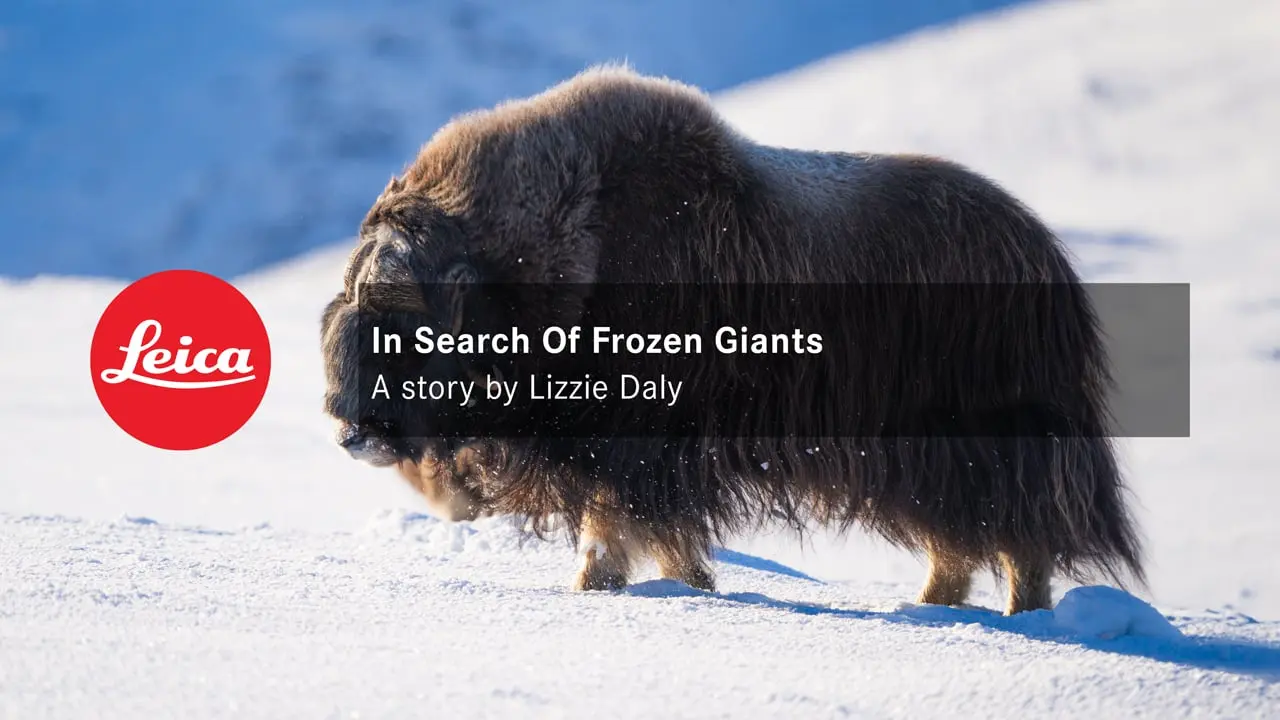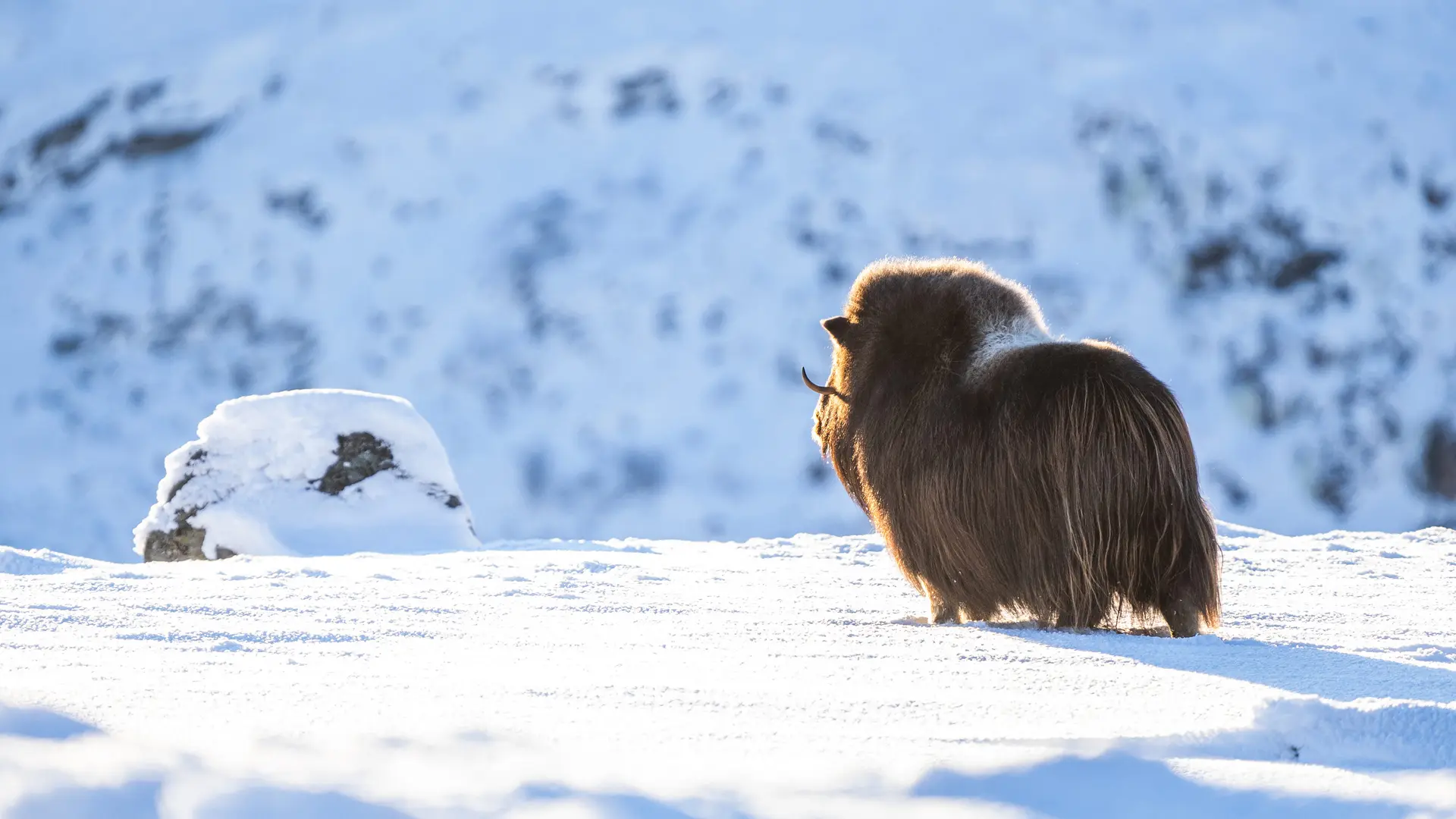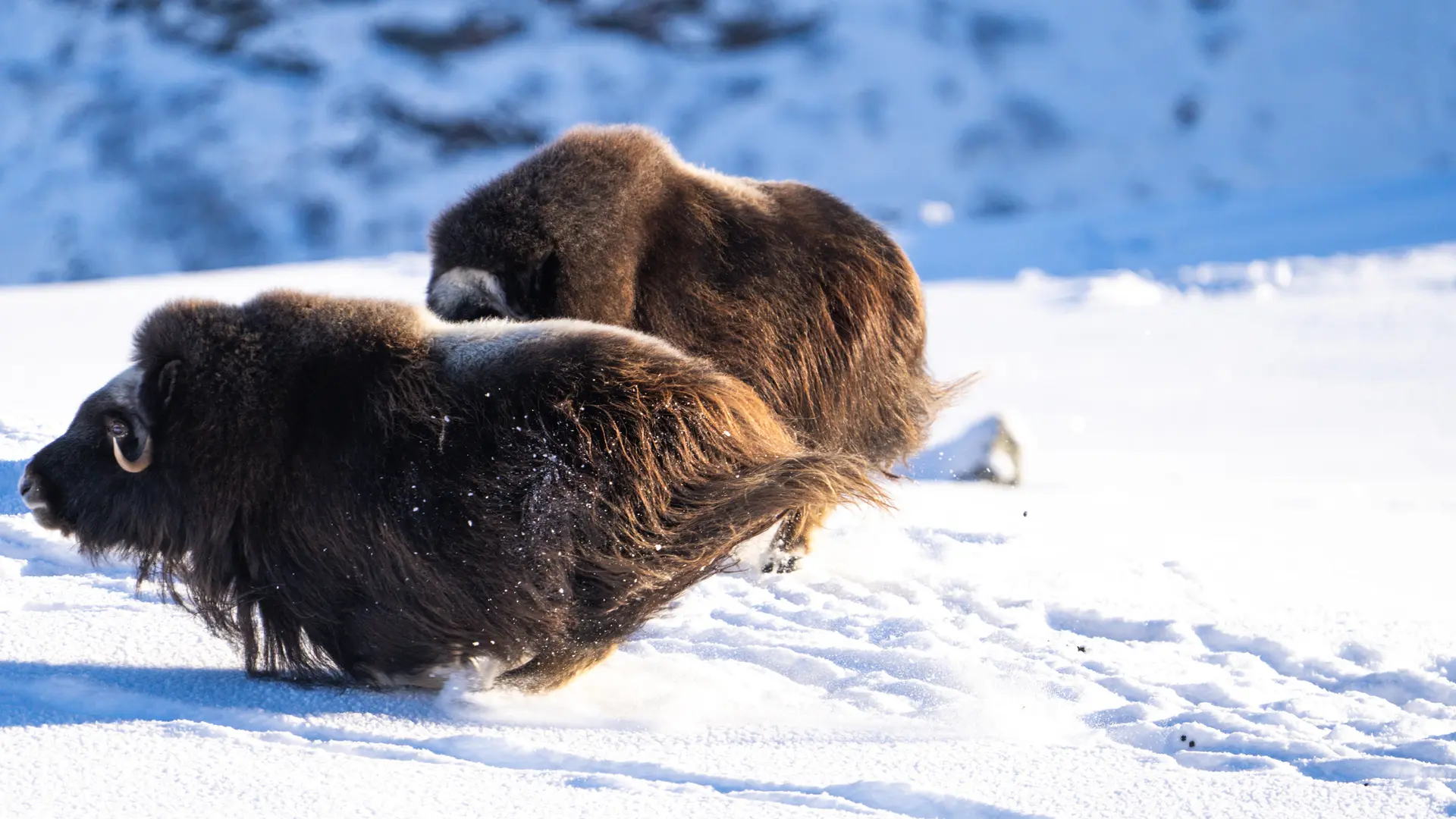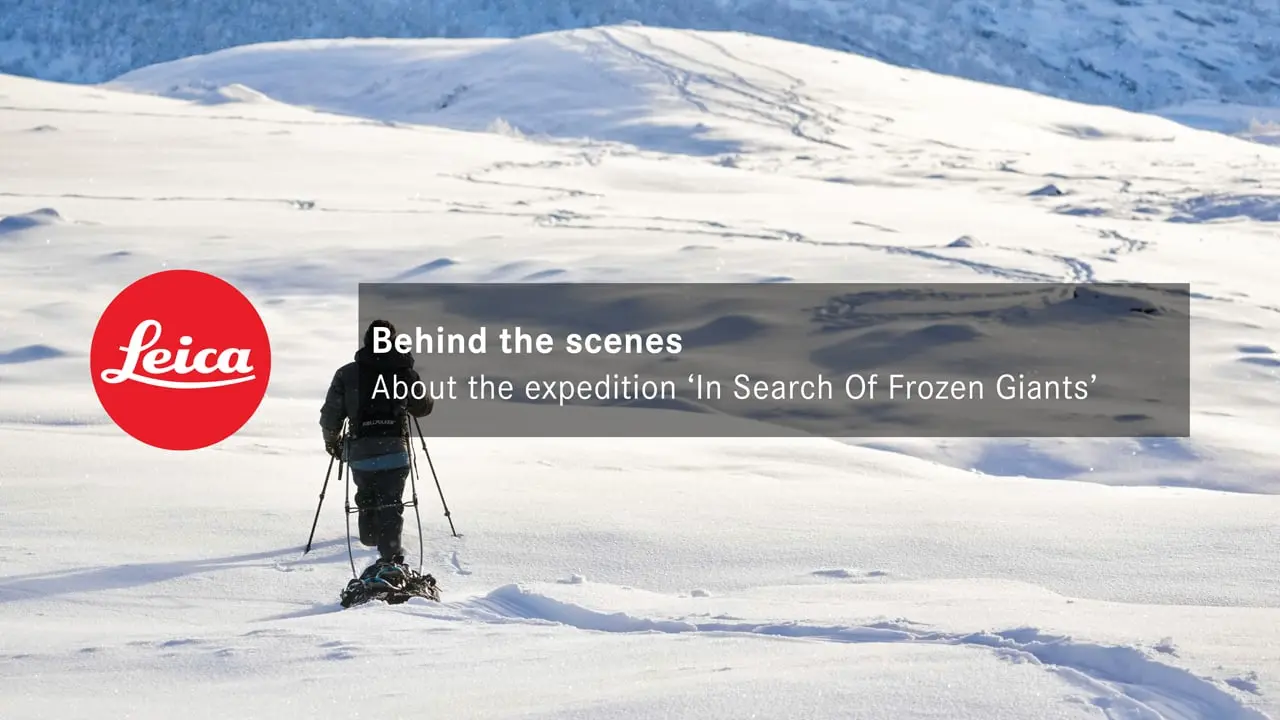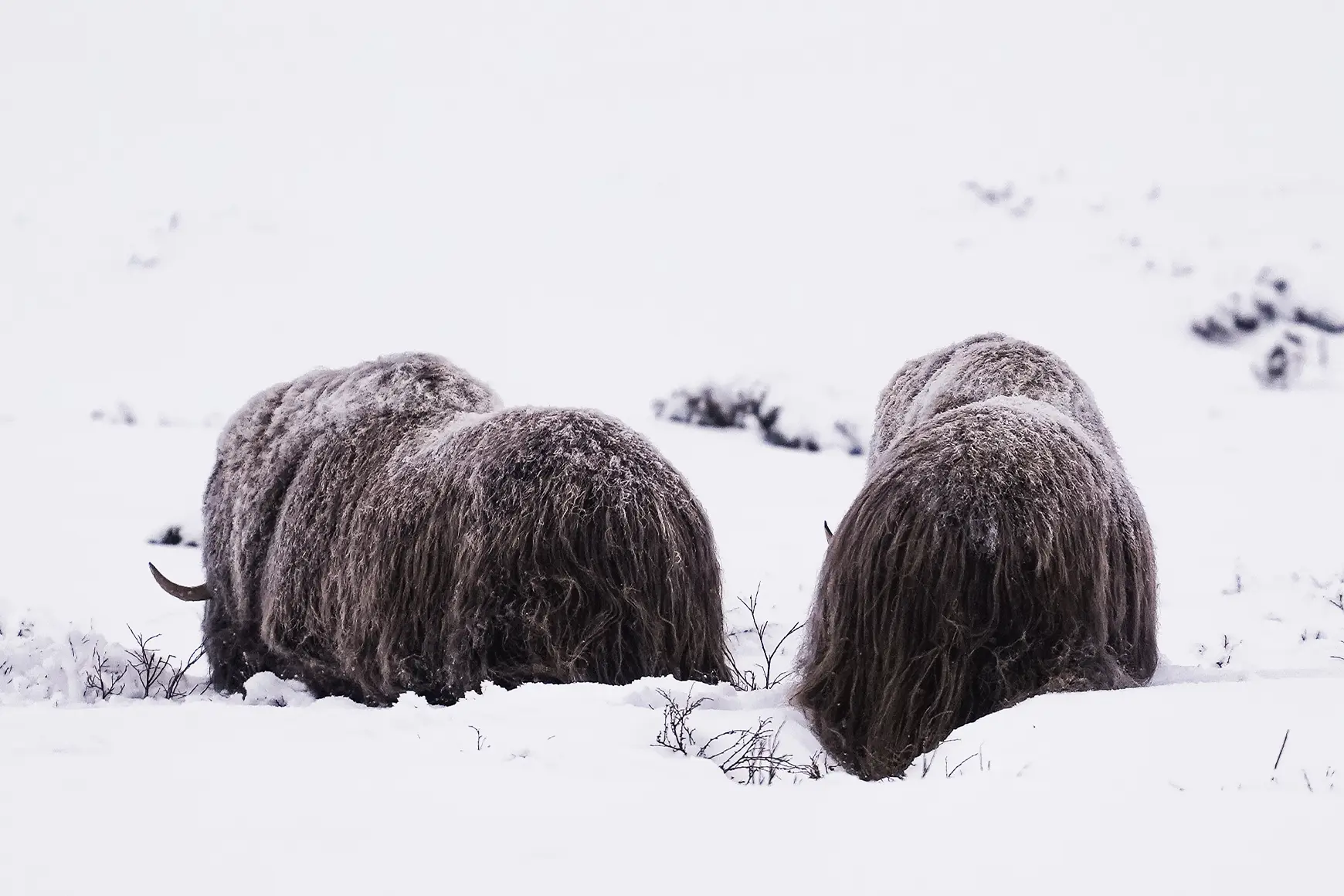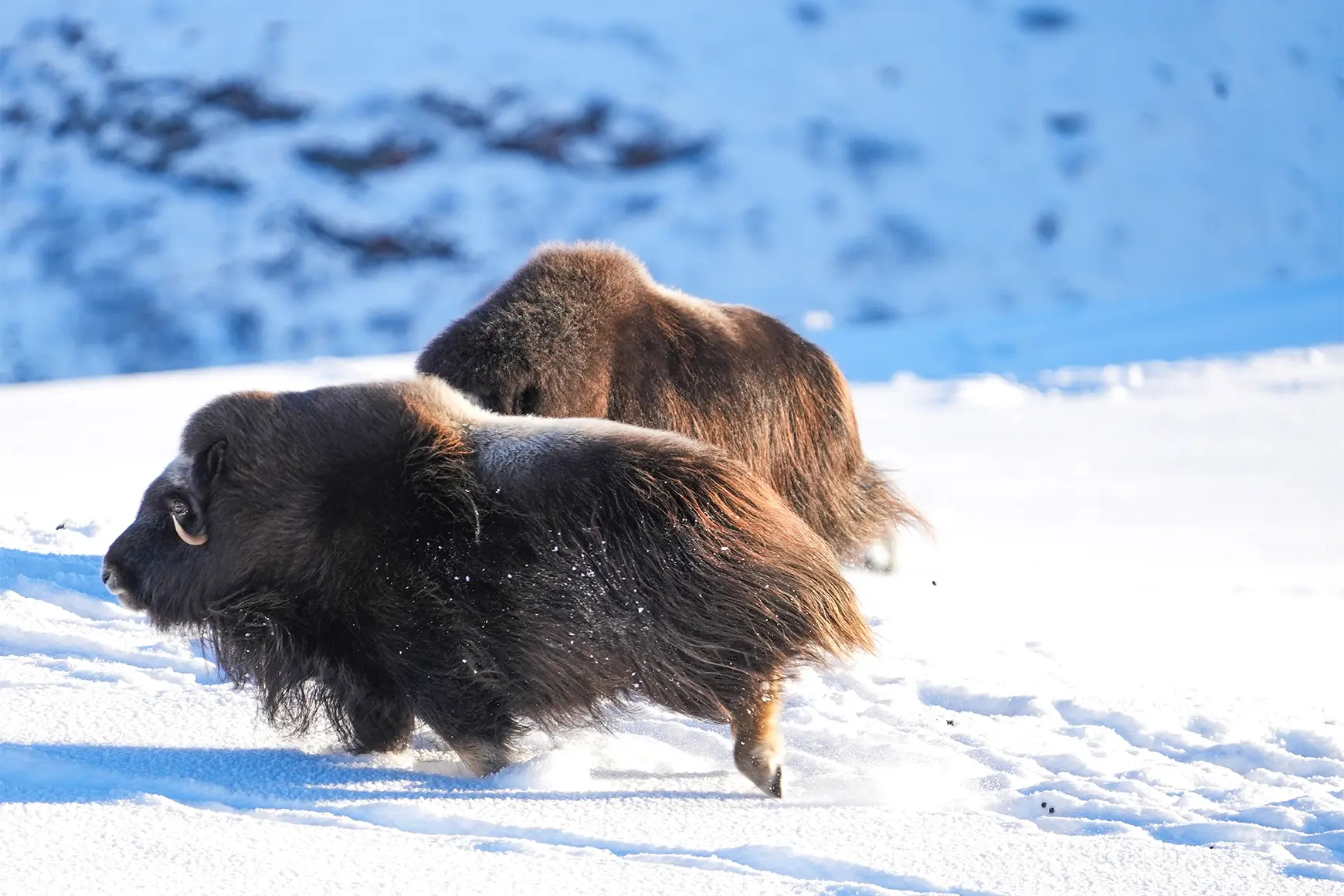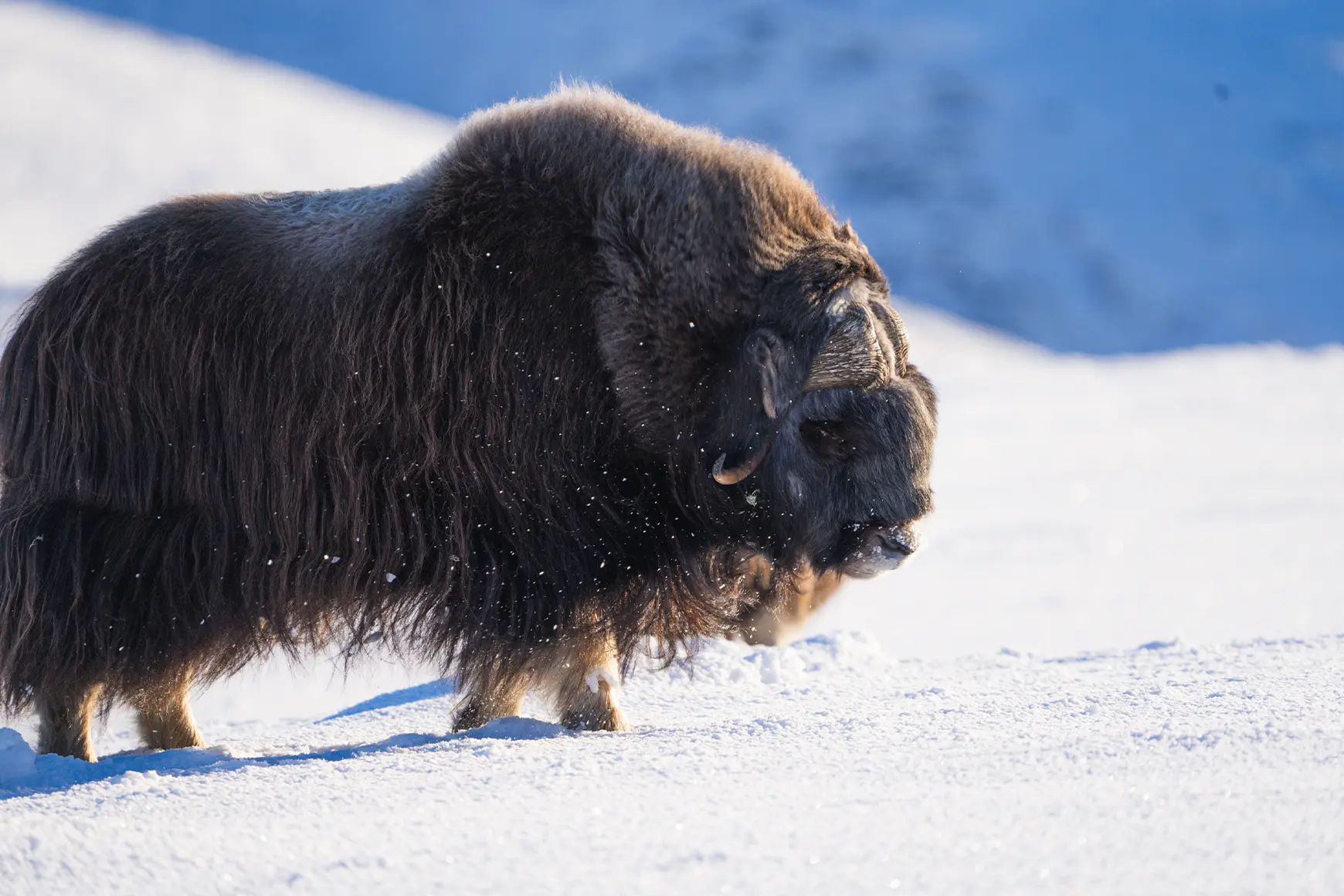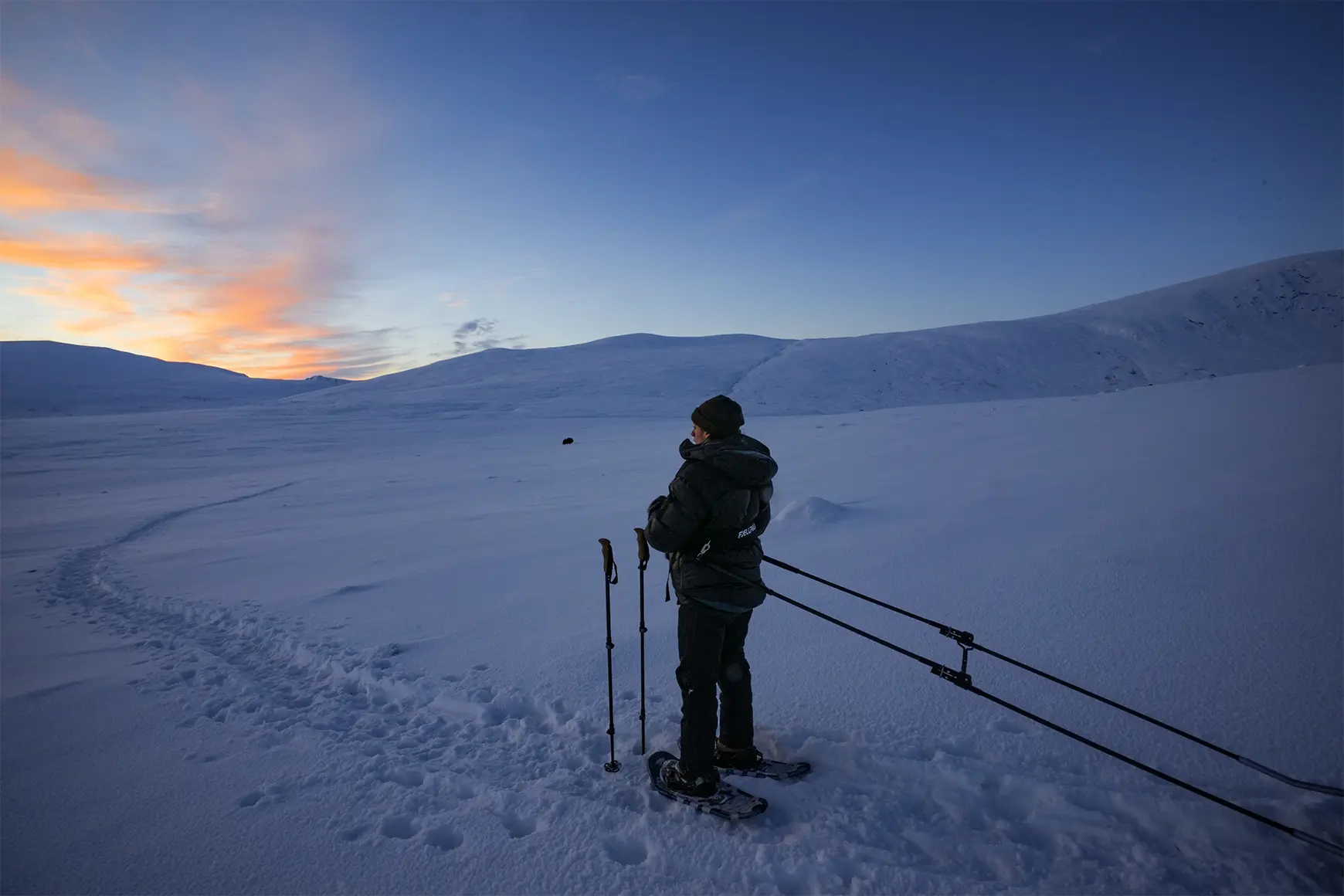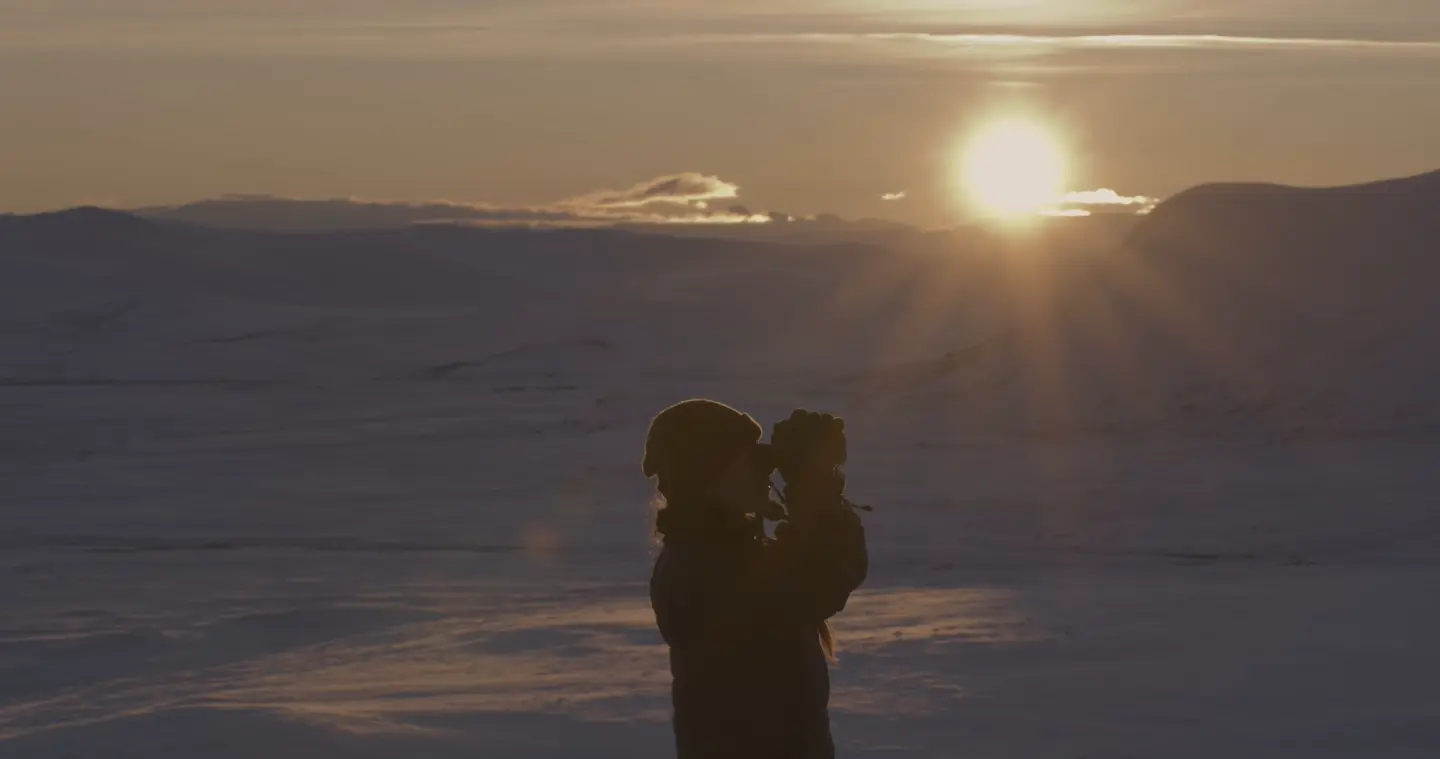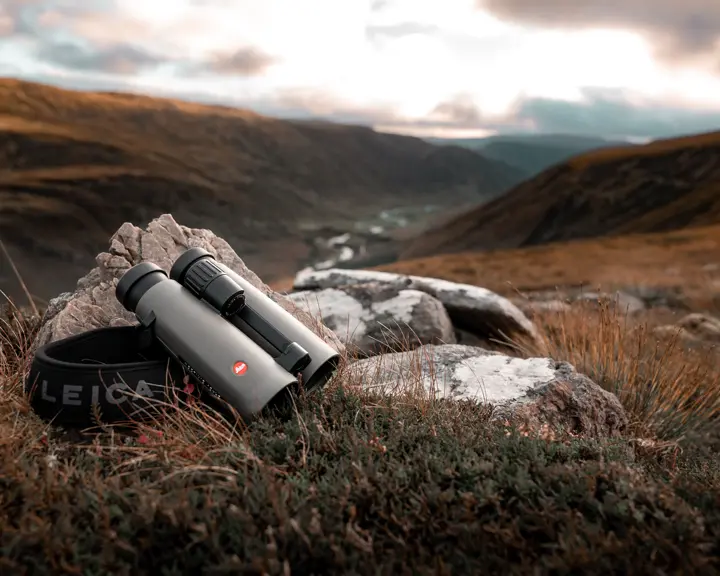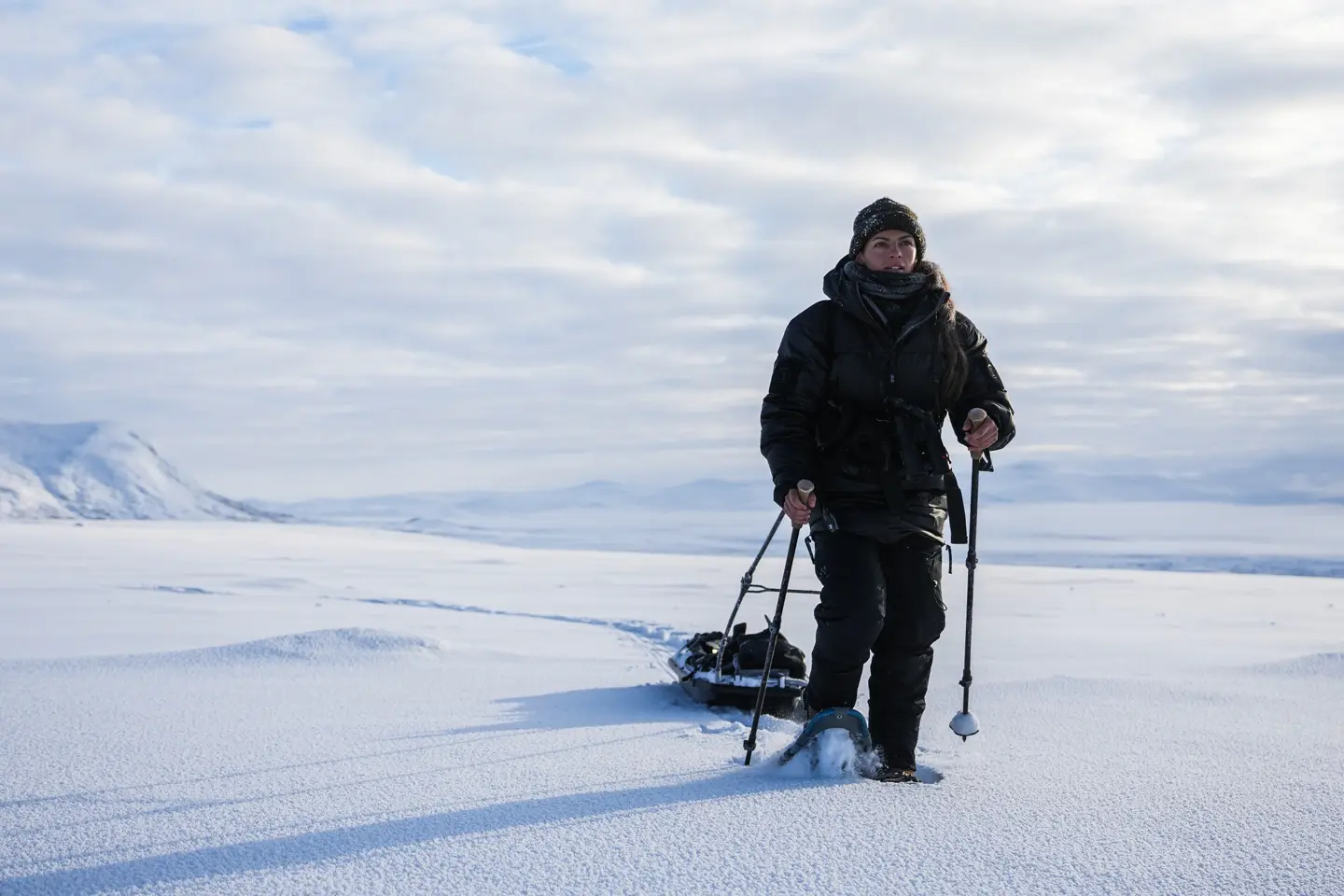
Leica x Lizzie Daly
The story begins...
In November, biologist and filmmaker Lizzie Daly visited Norway to tell the changing stories of the Arctic.
She ventured across plateaus in the south to document Musk Oxen and a story of a warming planet. While there she was accompanied by Floris Smeets (Photo Tours Norway) a local guide who helped her capture some incredible fighting behaviour of young males.
